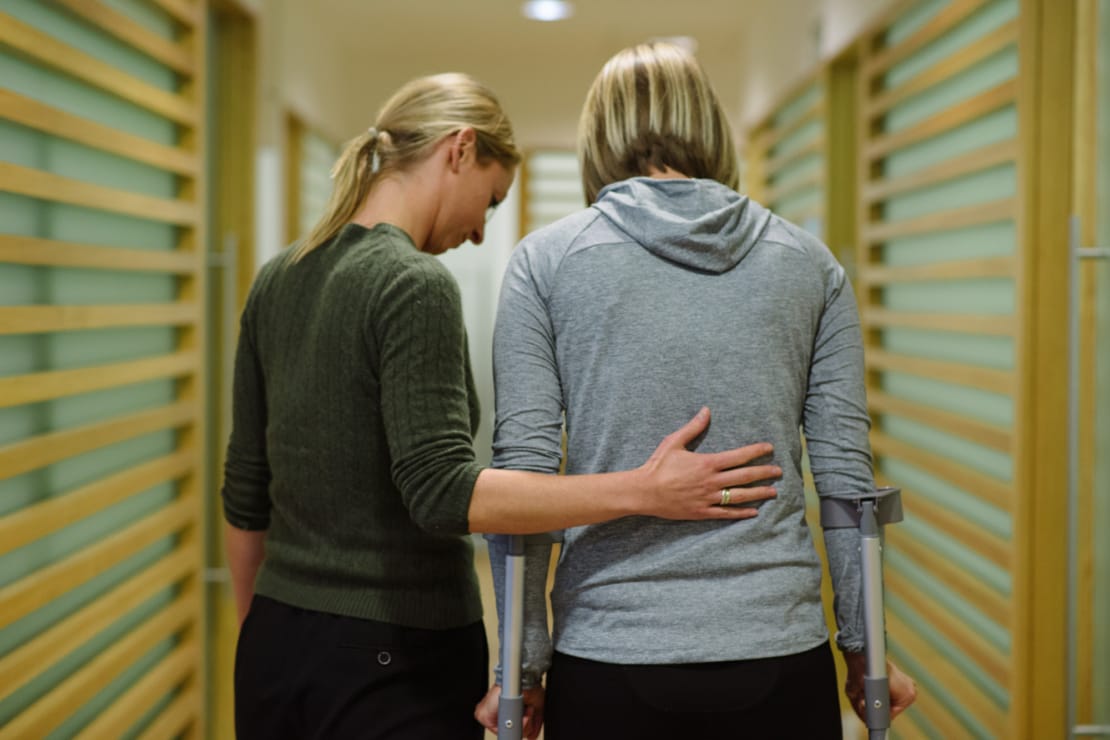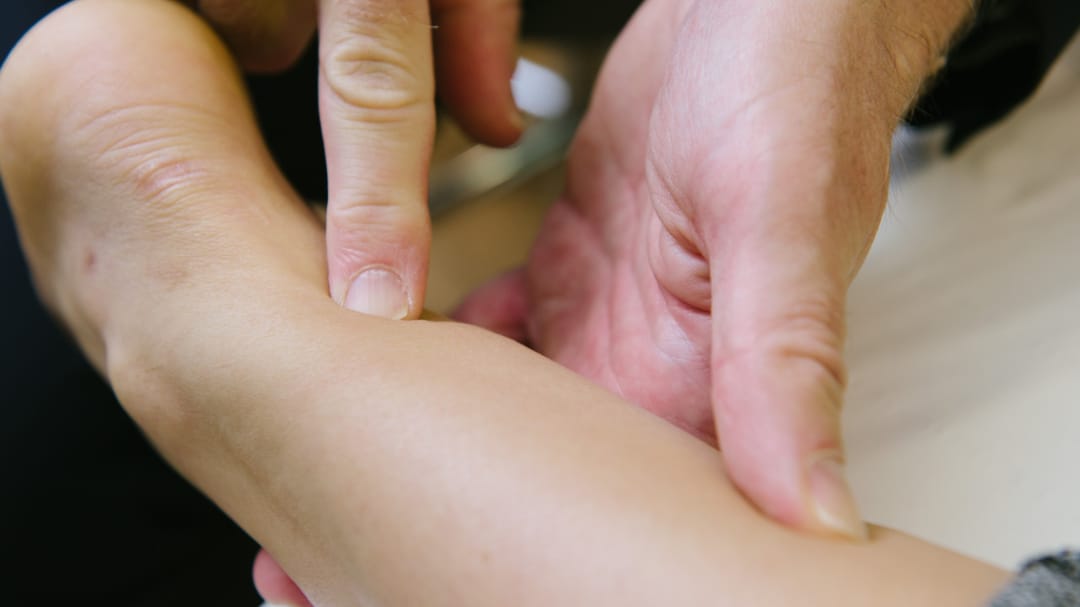Understanding Inflammatory Axial Spondyloarthropathy

Cameron Siandri
Physiotherapist
- 2 July, 2020
- Physiotherapy
- Podiatry
- Back Pain
- 3 min read
Understanding Inflammatory Axial Spondyloarthropathy

In my experience as a Physiotherapist, people commonly believe that their LBP is the result of acute injury/damage to specific structures in the Lumbar spine, such as a disc or muscle(s).
Lower back pain (LBP) is discomfort or stiffness felt in the area between the lower ribcage and the hips, often caused by muscle strain, poor posture, injury, or underlying medical conditions. It can range from a mild, occasional ache to persistent, severe pain that affects daily activities. Common triggers include heavy lifting, prolonged sitting, sudden movements, or age-related changes in the spine. While most cases improve with rest, gentle exercise, and good posture, persistent or worsening pain may require medical evaluation to identify and treat the underlying cause
While this may be the case, LBP is frequently present in the absence of structural damage, usually as a result of poor movement patterns and tissue strain. Either way, these are both examples of mechanical LBP. The National Ankylosing Spondylitis Society (NASS) defines mechanical LBP as pain arising from a structure within the spine, including nerves, intervertebral discs, facet joints, sacroiliac joints, spinal ligaments, spinal cord or paraspinal muscles (NASS, 2019).
While there appears to be a good awareness of mechanical LBP amongst patients, it is not the only cause of pain and stiffness in this area. Inflammatory back pain is a collection of symptoms indicating chronic inflammation of structures within the spine and entheses – the sites of tendon and ligament attachment into bone (NASS, 2019). It is important to differentiate between inflammatory and mechanical LBP, as the management can be quite different.
Inflammatory LBP can be difficult to diagnose, as the symptoms can be very similar to those of mechanical LBP. Symptoms can flare and settle over many years, and flares are not always related to an incident. Due to this, there is often a delay in correctly diagnosing inflammatory LBP.
Research from the National Ankylosing Spondylitis Society (2019) has indicated that there is an average 8.5-year delay in diagnosis for a specific group of inflammatory LBP conditions. This group of inflammatory LBP conditions are called spondyloarthropathies. These can be classified into two types:
- Axial:
- Radiographic Axial Spondylarthritis (Ankylosing Spondylitis)
- Non-radiographic Axial Spondylarthritis
- Peripheral:
- Psoriatic Arthritis
- Reactive Arthritis
- Enteropathic Spondylarthritis
- Undifferentiated seronegative arthritis
(National Health Service, 2020; National Institute for Health and Care Excellence, 2017; Rheumatoid Arthritis, 2018; Spondylitis Association of America, 2020)
There is a tendency to use the term axial Spondyloarthropathy (aSpA) to describe all these inflammatory presentations when they affect the spine now. The very early discrimination of the various sub-categories of disease can be challenging and delay in treatment due to semantic debate, and overdiagnosis must be avoided.
What we look for
Once inflammatory lower back pain (LBP) is suspected, we use a series of targeted questions to help distinguish it from mechanical LBP.
Key diagnostic questions:
-
Age of onset – Inflammatory LBP usually (but not always) begins before age 45.
-
Onset pattern – Mechanical LBP often starts suddenly, while inflammatory LBP tends to develop gradually and may persist for over 3 months before diagnosis.
-
Effect of movement – Inflammatory LBP typically improves with activity and exercise.
-
Effect of rest – Inflammatory LBP generally does not improve, and may even worsen, during rest.
-
Night-time symptoms – Waking in the second half of the night due to pain is a common feature.
Additional indicators of inflammatory LBP include:
-
Good response to NSAIDs (e.g., ibuprofen, diclofenac) within 48 hours
-
Thoracic spinal pain
-
Alternating buttock pain
-
Morning stiffness lasting more than 30 minutes after waking
-
Current or past enthesitis, e.g, tennis elbow, Achilles tendinopathy, shin splints
-
Current or past arthritis
-
Current or past psoriasis
Why early diagnosis matters:
Prompt recognition allows for effective management. Guidance for patients can be accessed through tools like the NASS Back to Action app. While exercise remains a core treatment, the use of biologic agents—medications that target specific parts of the immune system – is becoming more common. In most cases, these therapies, especially when combined with physical activity, are highly effective and can dramatically improve quality of life.
References
National Ankylosing Spondylitis Society 2019, Back Pain Plus, National Ankylosing Spondylitis Society, viewed 28/09/2019, https://nass.co.uk/get-involved/campaign-with-us/back-pain-plus/
National Health Service 2020. Reactive Arthritis, National Health Service viewed on 03/02/2020, https://www.nhs.uk/conditions/reactive-arthritis/
NASS – Back to Action exercise App
National Institute for Health and Care Excellence 2017, Spondyloarthritis in over 16s: diagnosis and management, National Institute for Health and Care Excellence, viewed 28/09/2019, https://www.nice.org.uk/guidance/NG65/chapter/Recommendations
O’Sullivan, P, Caneiro, J.P, O’Keeffe, M, Smith, A, Dankaerts, W, Fersum, K, O’Sullivan, K. 2018 Cognitive Functional Therapy: An Integrated Behavioural Approach for the Targeted Management of Disabling Low Back Pain. Physical Therapy, 98, 5.
Rheumatoid Arthritis 2018, Seronegative RA: What are the Symptoms of Seronegative RA?, Rheumatoid Arthritis Support Network, viewed on 03/02/2020, https://www.rheumatoidarthritis.org/ra/types/seronegative/
Spondylitis Association of America 2020, Overview of Enteropathic Arthritis/Arthritis Associated With Inflammatory Bowel Disease, Spondylitis Association of America, viewed on 03/02/2020, https://www.spondylitis.org/Enteropathic-Arthritis.

Advice
Over the last 20+ years our experts have helped more than 100,000 patients, but we don’t stop there. We also like to share our knowledge and insight to help people lead healthier lives, and here you will find our extensive library of advice on a variety of topics to help you do the same.
OUR ADVICE HUBS See all Advice Hubs

